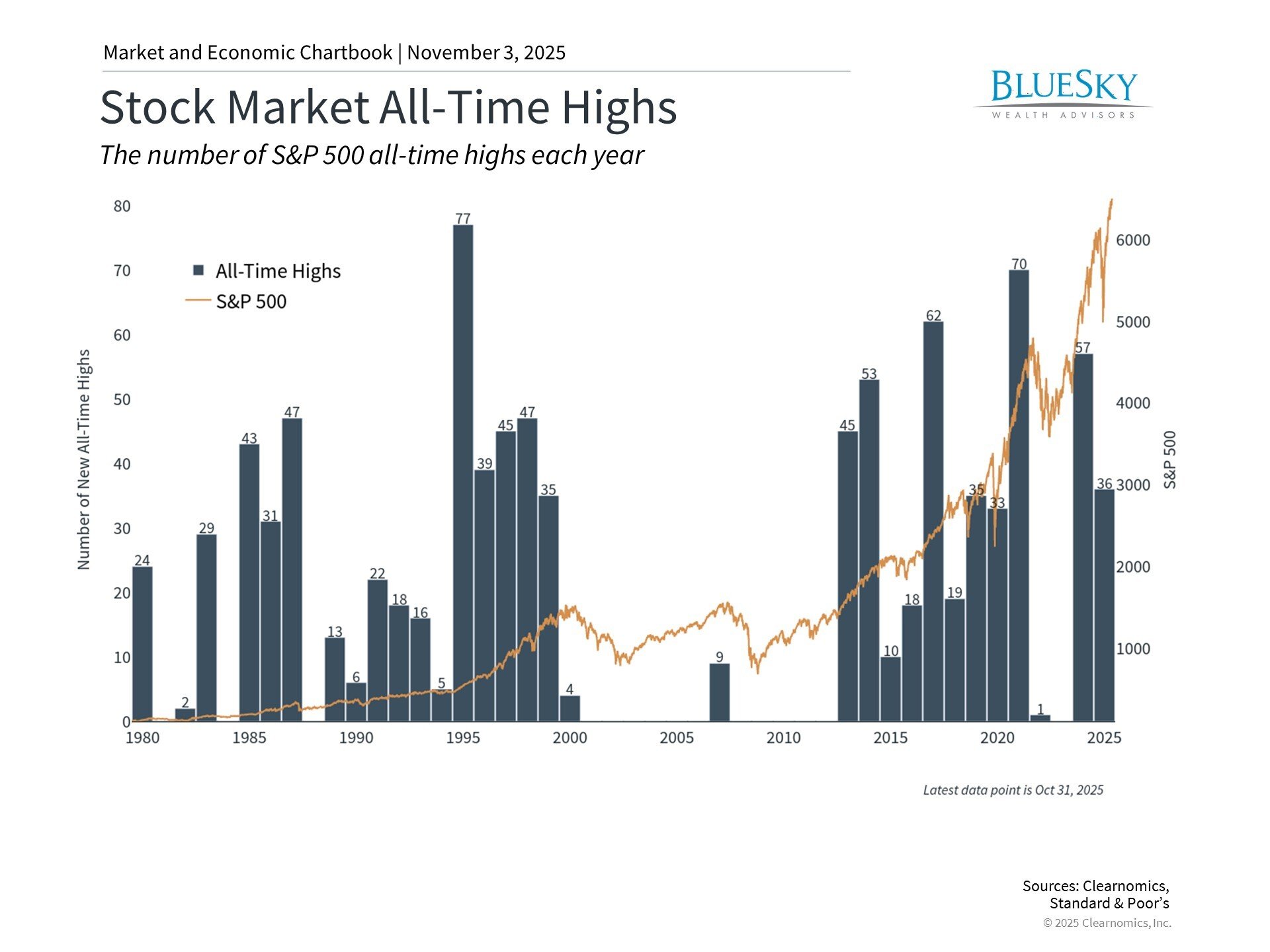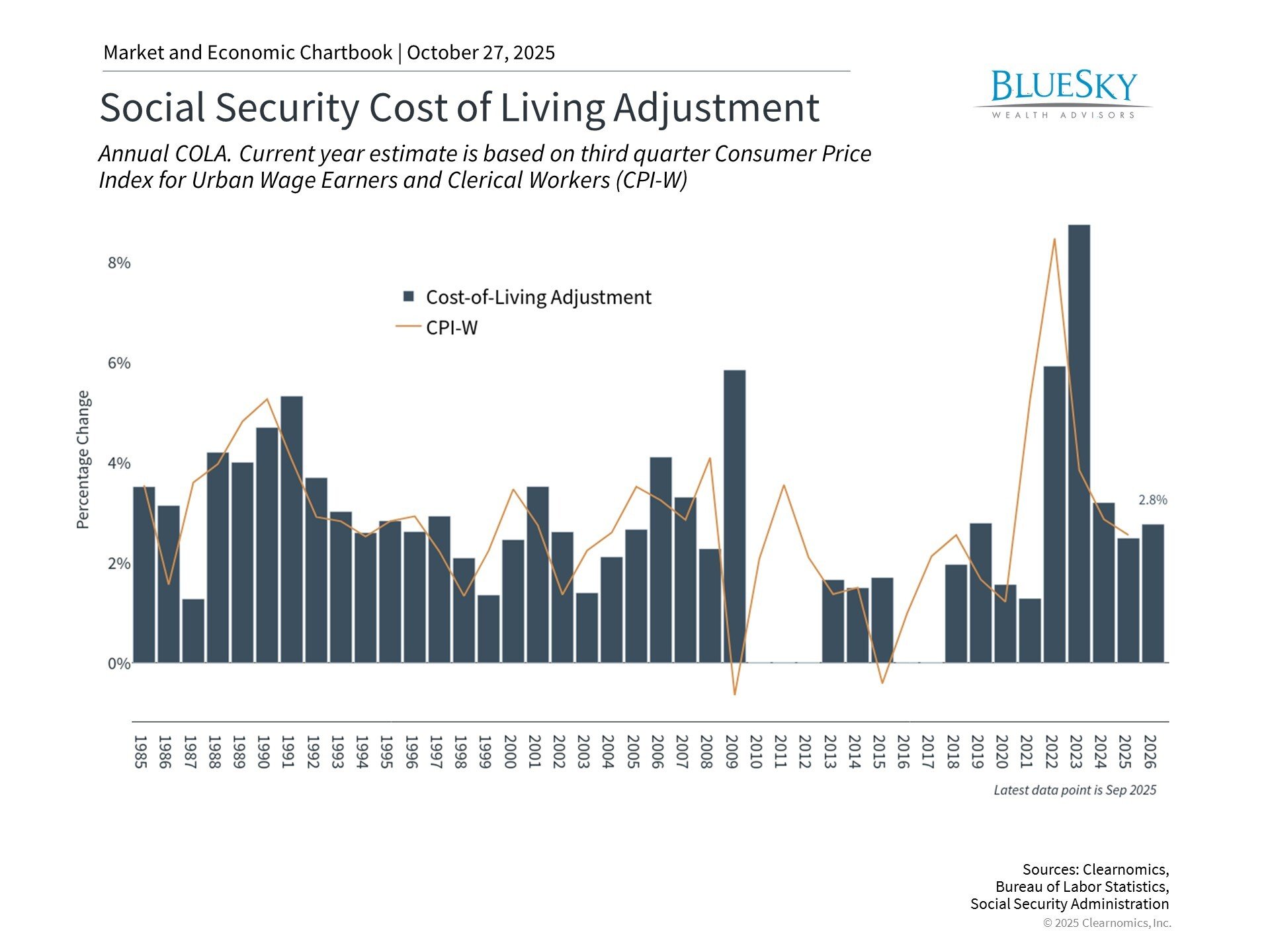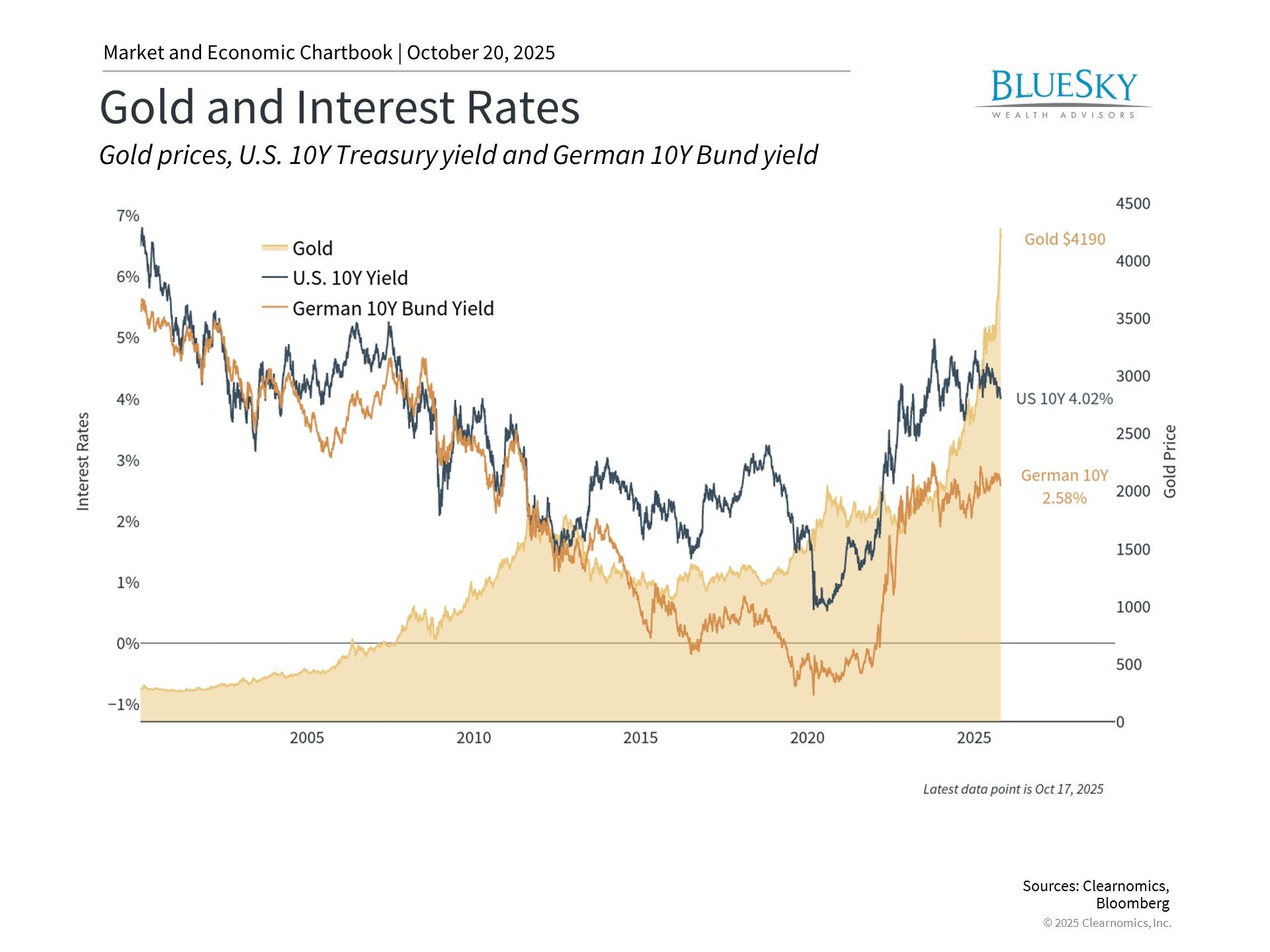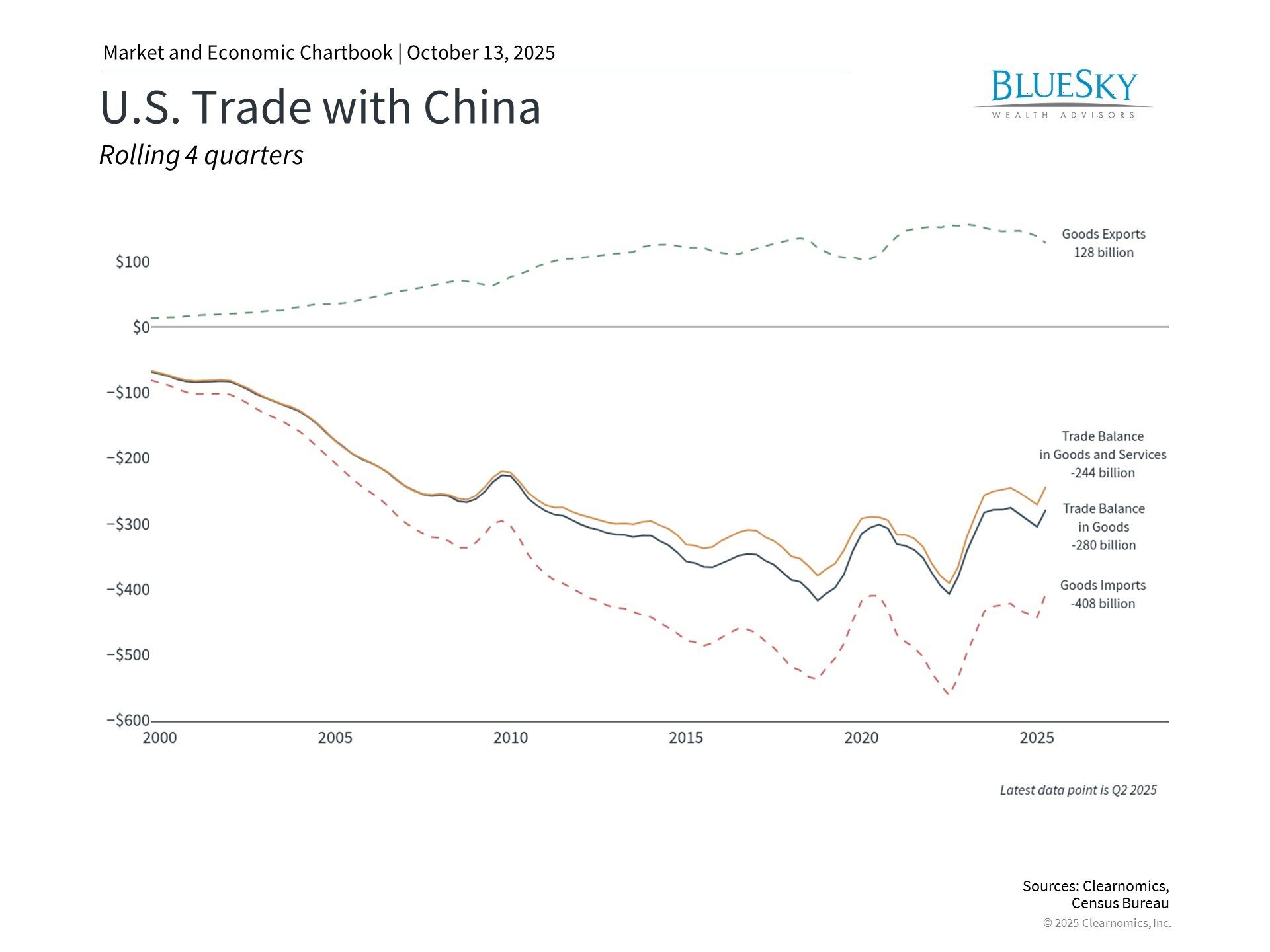
INFLATION CONTINUES TO RISE
INFLATION CONTINUES TO RISE
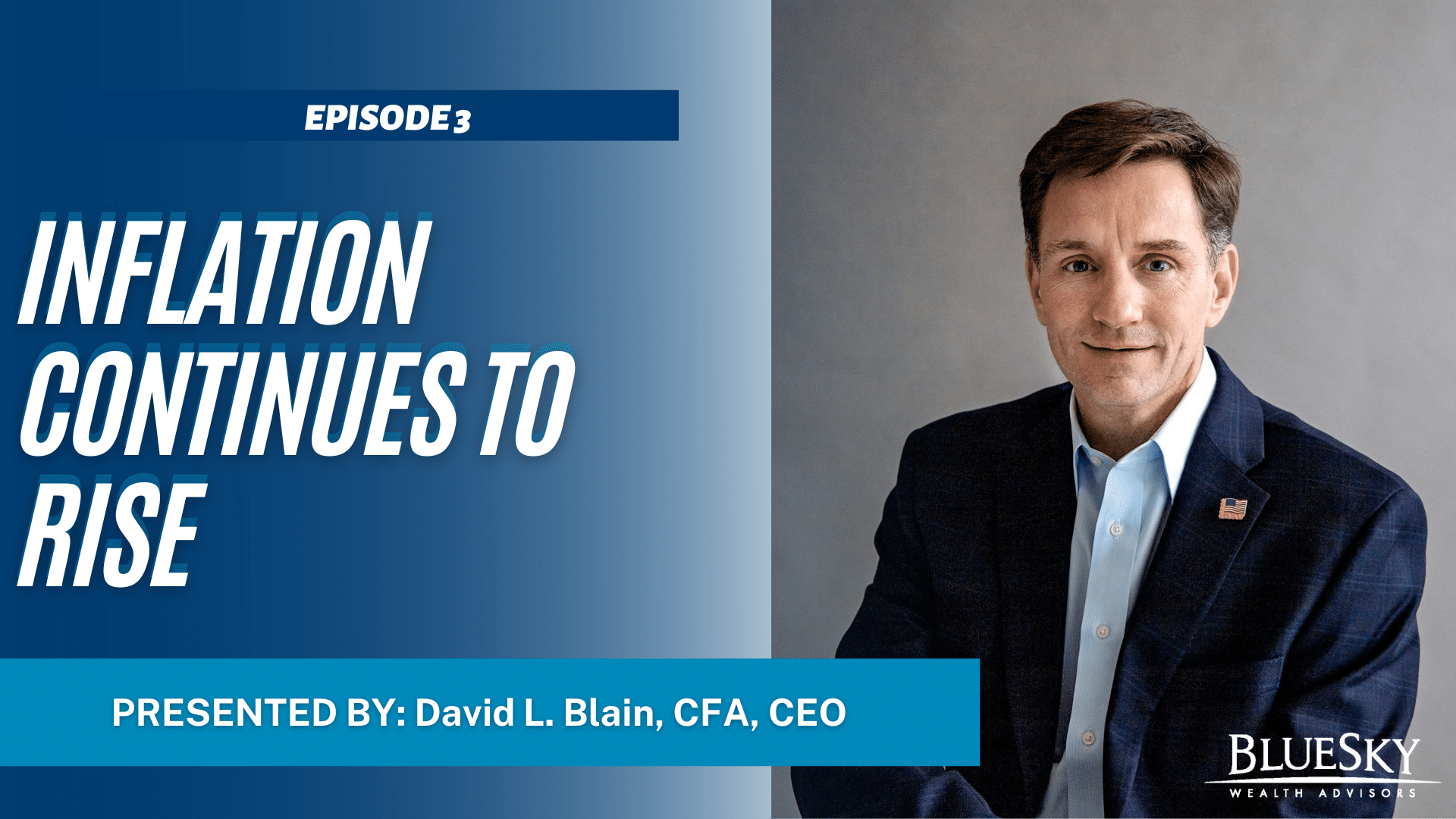
Introduction:
David L. Blain, CFA, CEO of BlueSky Wealth Advisors, and author of “Invest In Your Life, Not Just Your Portfolio,” digs deep to address the steep increase in inflation. What’s currently going on? What should we expect from rising inflation rates?
Transcript of Episode Three: Inflation Continues to Rise
Hi, everyone. This is David Blain, CEO of BlueSky Wealth Advisors. I’m here to talk to you today, my third video today. The first one, we’re just talking a little bit about the markets, what’s happening in the market, put that in historical perspective. The second one, we talked about the Federal Reserve and raising rates. This, my final video for today, we’re going to talk about inflation. What in the world is going on with inflation? What should we expect? What’s happening? Global inflation is definitely at multi-year highs. As someone my age, I remember back in the ’80s. It’s reminiscent of that when we had interest rates going up, inflation very high. We haven’t seen this globally for a long, long time. Combination of surge and global demand, coming out of the pandemic, supply chain issues, some places still shut down from COVID along with just massive government stimulus, printing money, paying off people’s student loans, sending checks to people. It’s just been unprecedented.
I remember in the global financial crisis, 2008, people were aghast at a $800 billion bailout of the banks and so forth. We’ve spent untold trillions and trillions of dollars this time. A lot of factors, COVID, supply, monetary, just flooding the system with money have caused this multi-decade high inflation. It’s not just here. It’s everywhere around the world. In the U.S., it’s been more demand-driven inflation. In Europe, it’s been a lot of energy. That was the other thing, so Ukraine war in the middle of all this. COVID, stimulus, money flying around, and then Russia decides to invade Ukraine. I don’t want to get too far off track here, but just really unbelievable that they would do that, the destruction and death for really no reason whatsoever. Now, of course, they’re cutting off energy supplies of Europe, so energy prices are really spiking, grain, food prices, Ukraine, Russia, big suppliers of grain so we see food prices going up.
But, I think the good thing is we see several positive things that are happening there that hopefully inflation will peak soon. Now, I know I’ve been saying this for a while, but the signs are out there. Number one is there is demand. The demand-driven inflation is slowing down. Growth is slowing down. We’re seeing housing market slow down. We’re seeing corporate earnings slow down. The federal reserve raising interest rates is working. It hasn’t hit quite yet inflation, but we do see growth definitely slowing down.
We also see the supply chain pressures easing a little bit for sure. In addition to the supply chain issues, we also see some deals for the grain in Russia, Europe getting some of the grain out of Ukraine, seems to be helping with food prices for sure. I would say though that the inflation will probably stay at an elevated level for a while. I don’t think it’s going to stay at the 8, 10, 15%, whatever. I mean, they change the way they compute the CPI. That’s a whole nother topic, but it will stay at elevated levels I think for a while.
Most people focus on the CPI, which is the consumer price index. You have the core CPI, which excludes energy and food, which tend to be the most volatile. Then you have the total CPI. There’s something else called the PMI, which is the purchase managers index, which is a, it’s kind of the, before products get to the consumer, it’s kind of the wholesale inflation, if you will. We’ve definitely seen the PMI indexes for both developed and emerging markets peak somewhere around the springtime and have been in a sharp downtrend since then. Producer prices usually weed the consumer prices. That’s a little green shoot there, a little bit of hope for inflation.
As I mentioned already, supply chain issues are beginning to ease. There’s a supply chain. When we look at indicators of the supply chain, we see a sharp decline in the pressure of the supply chain, which typically, if you look at a CPI overlaid on the supply chain, you typically see once again easing pressure in the supply chain leading a decline in the consumer price index. That’s what we’re seeing right now.
The job market still remains strong around the world, keeping wages elevated. For those of you getting out there, employers trying to run a business, it’s tough. The job market is still. We see some isolated layoffs here and there, but the reality is anybody that wants a job today can get a job and the wage pressure is very, very strong. And so, that is a inflationary pressure. It pushes inflation up, things like… Also, while the savings rate has come down, the amount of money, the amount of savings that people are sitting on and the economy is huge, is massive. And so, that sort of war chest of cash that people are sitting on keeps driving demand. Those are negatives.
The positives are purchase managers index coming down, supply chain pressure coming down, negative still wage pressure on the upside. Also, just a massive amount of cash sitting out there in people’s checking, banking, CDs, money market, whatever, that also puts upward pressure on wages. Global food prices definitely topped out back in March and have fallen since then. Same thing, oil, I mentioned this my other video, oil, Brent Crude is down over 25% from its recent peak, so helping to push down some of that pressure on energy prices. It’ll be interesting to see what happens in the winter as people begin to, typically, that’s a higher energy use for home heating oil, natural gases type of thing, certainly people running their air conditioners in the spring and summer, but the winter tends to be a heavier energy use time.
As I mentioned, these imbalances are not going to sort themselves out next month or next year. Inflation expectations for the future have definitely come down, but they still remain higher than normal looking at close to 4% inflation. It’s where people think it will level out in the next year or two. Once again, the Federal Reserve target is to get it back down to two. That’s going to take a while. I think a good target in the interim would be if we can get into the threes and four, we’ll be making really good strides lowering that inflation rate. Once again, that job market, it really keeps the wage pressure high. Of course, we don’t want to trigger a recession with people losing their jobs to break that cycle. If we can ease out of it, that’ll be the best thing for everyone.
Certainly, central banks around the world remain hawkish. The ECB, European Union Central Bank as well as the Federal Reserve are still, their position is that the danger of inflation outweighs plunging us into a recession and inflation is a very insidious tax on an economy, on people on fixed incomes, on all sorts of things, not to mention our national debt. And so, most central banks around the world are likely to stay in that mode of raising interest rates for some time now to try to keep inflation lower.
I wanted to spend a minute, the reason we’ve had multi-decade lows in inflation, 1%, 2%, there’s been some secular things, by secular meaning like multi-year, multi-period shifts in the way that the economy works. I wanted to talk about those. Number one is technology. I mean, technology has driven the price of almost everything down, between labor, eliminating the need for manual labor for a lot of things, computing power, biochemistry, just anywhere you look, technology and those type of things have driven the cost of things down.
Number two, globalization and competition have driven the cost of things down. Now, there’s a question mark behind that one. Certainly after COVID, people were aghast that all of our medical supplies and things like that were coming from China. We couldn’t get stuff. It was in China. China was shut down. That one is a little question mark. That’s driven costs of things down. Now, people are talking about onshoring and reshoring. That remains to be seen whether the concept of globalization and competition will continue to drive costs down. I think it will. I just don’t think you’re going to see everything concentrated so much in China.
Number three, the demographics have certainly been driving disinflation with aging baby boomers, population growth leveling off, it remains to be seen whether those demographics are going to continue to keep downward pressure on prices. Remember what cause inflation, too much money chasing too few goods and services. That’s what drives up inflation. People are willing to pay more for things and it drives the cost up.
The next one is what’s driven inflation down is frankly people expected low inflation. Charlie Munger, who’s Warren Buffet’s partner talks a lot about the markets as complex adaptive systems. That means that the markets react to information as they receive it and people participating in the market actually affect the market itself. That’s the case with inflation is when people have inflation expectations that are very low, they take actions as if those inflation measures are low. And so, now, people are uncertain about what inflation should be.
As a business owner, not just me, but all businesses, when they have a good view of what the future looks like, if they can predict, “Okay, we’re going to be in one to 2% inflation,” they can make capital investments, they can enter new lines of business, they can acquire companies, things like that. When you have a very uncertain inflationary environment, it throws all of our models off. Plus financial people, inflation is the building block for almost every financial model, capital budgeting, business, everything like that. And so, you have wild inflation and uncertain inflation, that makes planning very difficult, which holds growth back.
That’s the take on inflation. Just to summarize, there are some positive signs that inflation would be coming down soon, but also, don’t expect it to go back to 1 or 2% for many, many years. There’s just probably not going to happen, but I remain optimistic that we can get out of this 8, 9% inflation back down into 3, 4%. On the flip side of that, you look at the treasury yields, the U.S. Treasury bonds are paying much more now. That’s how you gauge is inflation in the treasuries are in somewhat of a symbiotic relationship and as interest rates go up with inflation, while they don’t move lockstep with each other, there is a relationship there. You’re not going to have 8% inflation forever and treasuries only paying 4%. Eventually, they have to equalize.
Anyway, that is my take on inflation. This video is about inflation. I did a couple other this morning as well. I did one on the economy and the markets in general, kind of a historical perspective. Then the other one I talked about, the Federal Reserve and what it means when they’re raising rates. I hope you had a chance to watch at least some or all these videos. As always, if you have any questions, feel free to reach out, contact me or your advisory team. We love to talk about this stuff and make sure that you understand what’s going on in the world today. I hope you enjoy the rest of your day and thank you for listening.


